- Administrator
- Albums and Singles
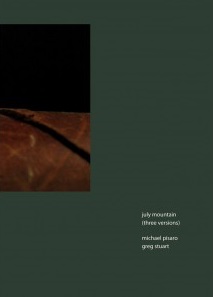 Wallace Stevens wrote "July Mountain" in the last year of his life, suffering from stomach cancer. A recognition of mortality and imperfection hides in his poem’s first eight lines. They gently and beautifully remind the reader that life on earth is a fragmented thing, and that there are no conclusions, no full and final stops that shine a light on all the dark corners in the world. Instead we are all "thinkers without final thoughts in an always incipient cosmos," forever watching the world and the stars spin themselves into new configurations. The poem explicitly uses music as an image for that interminable metamorphosis, and Michael Pisaro’s composition of the same name demonstrates just how apt an image it is. July Mountain (Three Versions) illustrates Stevens’s contention, combining field recordings with incredibly stealthy musical contributions provided by Greg Stuart. Bowed snare drums, piano, bird calls, jet engines, and numerous other sounds, from sine tones to insects, unexpectedly coalesce over its 21 minutes, forming a quivering and effervescent peak for anyone willing to make the ascent.
Wallace Stevens wrote "July Mountain" in the last year of his life, suffering from stomach cancer. A recognition of mortality and imperfection hides in his poem’s first eight lines. They gently and beautifully remind the reader that life on earth is a fragmented thing, and that there are no conclusions, no full and final stops that shine a light on all the dark corners in the world. Instead we are all "thinkers without final thoughts in an always incipient cosmos," forever watching the world and the stars spin themselves into new configurations. The poem explicitly uses music as an image for that interminable metamorphosis, and Michael Pisaro’s composition of the same name demonstrates just how apt an image it is. July Mountain (Three Versions) illustrates Stevens’s contention, combining field recordings with incredibly stealthy musical contributions provided by Greg Stuart. Bowed snare drums, piano, bird calls, jet engines, and numerous other sounds, from sine tones to insects, unexpectedly coalesce over its 21 minutes, forming a quivering and effervescent peak for anyone willing to make the ascent.
July Mountain first appeared as a single piece on a limited edition CDr released by Engraved Glass. To the "California Version" presented on that disc, the Gravity Wave release features two additional performances. One of them, the "Austin Version," is a complete rendition, combining 20 field recordings unique to that city with 10 layers of percussion recorded by Greg Stuart. Instructions for how the field recordings are to be obtained are minimal (make 20 of your own, or get them from the composer, just make sure to point the microphones at mountains or valleys if possible), but their durations and their arrangements with respect to one another are very well defined. They are all ten minutes long, and there are only ever ten recordings playing simultaneously.
On the percussive side, the featured instruments include resonating surfaces teased by sine waves, vibraphones wrapped in tin foil, and "seed rain," a steady stream of seeds, rice, or beans poured over crotales or a glockenspiel (the score gives the performer plenty of choices). Their timings and durations are specified by time markers—four bowed wooden blocks at nine and a half minutes, one projected sine tone at five and a half minutes, lasting for seven minutes and thirty seconds—and the methods suggested for playing them, including the exact qualities to be elicited from them, are described rather than strictly notated. For example, the instructions for the bowed snare drum read, in part, "Sounds may be created by bowing on any part of the instrument and by bowing on a drumstick or doweling with its tip pressed against the drum."
In combination, these two elements are difficult to separate. Conglomerations of sound rise and fall together, smearing into agreement as they are carried away on the same breeze, cars buzz anonymously down lonely roads, storms rumble in the distance, and unidentifiable particles of noise slip in and out of earshot as naturally as the hum of traffic or the rush of wind through the leaves. No hint of instrumental interference is evident until some eight minutes into the song, when the first piano chord sounds. Greg Stuart has actually been playing for six minutes by that point, but it’s not easy to ascertain what belongs to him and what belongs to the mountains of California.
The "Instrumental Version," which omits all the field recordings, renders the extent of this subterfuge with shocking clarity, and is in some ways responsible for making July Mountain (Three Versions) such an eye-opening and enjoyable document. On its own, the music is lovely and unassuming. No matter how thick and confusing the recording becomes, the atmosphere stays spacious and inviting. It drifts without meandering, gradually gains density, and then slowly fades away, as if every element outlined in the composition had been captured all at once, completely by accident. Listening to the "Instrumental Version" adds insight, and a chance to hear how Pisaro and Stuart make the magic happen. It’s exciting to peak behind the curtain and get some sense of the process.
Pisaro’s decision to include the final line of Stevens’s poem in the liner notes provides nearly the same kind of insight, though what it reveals is less technical and more poetic. Just as "Vermont throws itself together" as Stevens climbs the mountain, so too does July Mountain take shape as it is recorded, performed, and heard. Even with all the elements of the instrumental score cemented by a recording, a near infinite variety of performances is possible, each one an accumulation of local sensations captured and sent into orbit, together forming a constellation of perceptions. The work of the composer is discernible upon inspection, but the performance of the piece demands variety. No final mix follows, there’s no signature on the dotted line; it’s an ever-evolving network of coincidences, revelations, and possibilities. July Mountain comes together as we listen to it, maybe as all songs do. But as a composition it asks that we take shape with it. When the sounds finally stop, it must be that something in ourselves stops with it.
samples:
 
Read More
- Administrator
- Albums and Singles
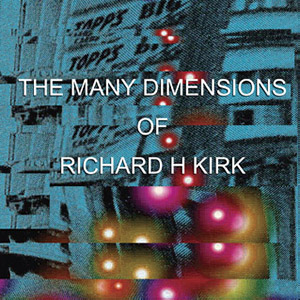 With the reissue of the Cabs' mid-period work last year and Richard H. Kirk's revival of the name for some upcoming performances, this boxed set arrives at just the right time to help brush up on his voluminous solo projects. Compiling three albums released digitally in the past few years, it does an exceptional job at capturing at least part of his multiple personalities, and if nothing else demonstrates just how relevant he continues to be.
With the reissue of the Cabs' mid-period work last year and Richard H. Kirk's revival of the name for some upcoming performances, this boxed set arrives at just the right time to help brush up on his voluminous solo projects. Compiling three albums released digitally in the past few years, it does an exceptional job at capturing at least part of his multiple personalities, and if nothing else demonstrates just how relevant he continues to be.
Given that these three albums have all been available individually via various digital music services for the past few years, this set may be a bit less essential for some than others.Since I am not at all a fan of digital music distribution, I never picked up any of these albums individually, so this was all new to me.The 1960s compilation record titling is fitting, because it serves the same purpose without being a superfluous greatest hits record.
Reality is Opposite is the sound and style that I most associate with Kirk's post-CV career. Noisy samples, hard hitting beats, and cut up voices have been the bread and butter of his projects for years, and this disc heavily features all of it.His penchant for bent funk is all over these eight songs, from the guitar loop of "The Ghetto Child" to the wah-wah heavy effects on "The Young Men Have Guns."Pieces like "Make It On Down" and "Walkin Around" feature a sampled jazz drum loop, dropping the tempo on the latter and giving both a more than just straight-forward techno sound.
He pulls back the club friendly structures somewhat throughout, such as his decision to deeply bury the drums of "Tune In/Turn Off/Care Less," and the beat-less synth expanse of "New Level of Threat."The stripped down sequencing and heavy bass on "The Future Rising" stood out to me like a throwback to the early CV singles, updated with modern sounds but keeping that old, playful experimentation intact.
 
samples:
Umladen, as Orchestra Terrestrial, has Kirk dropping the beats and funk for a less contemporary, more 1970s sounding krautrock synth excursion."Feierlichkeit" is presented with vinyl surface noise atop pulsing bass and basic, melodic synth sweeps, resulting in a pensive, somewhat dour piece that heavily contrasts the militant thump of Reality is Opposite.Kirk factors a bit more rhythm into the equation on "Umladen" and "Zivil," although in the form of bleeping synth sequences rather than big beats.The latter’s inviting, almost catchy feel immediately made me think of '70s Kraftwerk covered in modern grime.
"Autoschlepp" also focuses on a modern ambient electronic sound, admittedly via a bitcrushed melody that keeps it just the right side of weird."Observatorium" and "Prophezeien" are built upon gentle passages of white noise and downtempo synth strings, especially on the former.They would fit in quite well as soundtrack work, but stand nicely on their own as well.
 
samples:
The final disc, Anonymized (via Richard H. Kirk and the Arpeggio 13), sits somewhere between the other two in terms of mood:the overt use of arpeggios maintains a sense of rhythm throughout, but in some cases they are so stretched out/processed the structure is almost invisible.Songs like "Gun Step Funeral Charge" are all jagged, clicky blips of synth noise that excel in their repetition and abrasiveness."Inclement Weather" has Kirk transforming the rapid notes from rhythm to melody as they become more elongated and processed.
"Those Officers" is an example of where the structuring becomes less about rhythm and more about mood and texture, with the arpeggiator allowing the tones to stretch out more."Shore Up the Defences" and "Uprising," on the other hand, sound heavily rooted in 1970s science fiction television:the simple bleeps and note progressions scream "this is the future because we are using synthesizers".This might give both a certain nostalgic value, but makes for dated sounding music.
Of the three, I found Reality is Opposite to be the most enjoyable, largely because it fits in closest with my previous experience with Kirk's work.That modern, updated take on 1970s American revolutionary imagery fits perfectly with current social conditions in the US, as does most of his favorite themes.The only thing that is added from the original digital releases other than the individual sleeves is the thick collage booklet of Kirk's standard lo-fi Photoshopped video art and a box that sits handsomely next to the recent CV live set he released, so those who own these digitally might not be easily persuaded to get the physical version.For those like me, however, who dabble in his catalogue and missed these the first time, it is a perfect way to grab three very different sounding, but distinctly Richard H. Kirk sounding albums.
samples:
 
Read More
- Administrator
- Albums and Singles
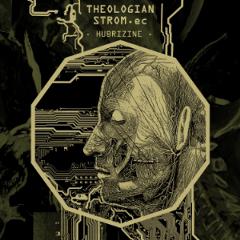 Hubrizine sees Theologian's extremely prolific Lee Bartow reworking material provided by the duo of Jasse Tuukki and Toni Myöhänen (Strom.ec) into a noisy mass of sci-fi tinged electronics in tribute to Philip K. Dick. Even with the large number of Theologian releases, he shapes this material into an album that shapes the ugliness of noise into captivating musical structures with an impressive depth that makes for a distinct, unique sounding record.
Hubrizine sees Theologian's extremely prolific Lee Bartow reworking material provided by the duo of Jasse Tuukki and Toni Myöhänen (Strom.ec) into a noisy mass of sci-fi tinged electronics in tribute to Philip K. Dick. Even with the large number of Theologian releases, he shapes this material into an album that shapes the ugliness of noise into captivating musical structures with an impressive depth that makes for a distinct, unique sounding record.
Many of these contemporary artists working in this post-/death-/whatever industrial framework are content to simply pile digital reverb on top of metal scrapes and synth noises and call it an album, but Hubrizine has so much more complexity than this.Even through the echoing drone and skittering pseudo-percussion of "Ubik", melodic electronics shine through, and the whole thing has a distinctly composed sensibility to it.The elongated tones and fuzzy bursts of "Flow My Tears" place it in some grey area between beautiful and ugly, with the ambiguity adding greatly to the piece as a whole.
Other times the two projects choose to lean more into one extreme than the other."EM-19" begins with an almost orchestral loop that soon gives way to overdriven crunch, heavily processed screams and metallic banging.Even within these chaotic elements, they manage to put together a structured, orderly piece that never feels random or directionless.At the other end of the extreme would be "World War Terminvs", where things pared down to a ghostly drift.Sometimes ominous, other times delicate and beautiful, it sticks to the less harsh sounds.
The album's centerpiece is the lengthy title composition that brings all of these disparate elements together.What may be guitar generated expanses of feedback surge throughout the opening minutes, with melodies snuck in amidst the noise.The guitar noise drops away to bring the melodies to the forefront, but gets noisy again, with a more cybernetic and evil quality to it.It all builds into a full on power electronics assault, with blown out electronics and harsh vocals resulting in a fitting climax.
While the work of these two artists is stylistically clear, the album is not something that can be easily pinned down as far as genre goes.This is largely because they manage to avoid the clichés and demonstrate a compositional ability that is more complex than most of their peers.It is uncommon that "harsh" artists such as these build in so much song-like style and progression into their work.That is exactly what makes this album excel, and stand head and shoulders above so many others.
samples:
 
Read More
- Administrator
- Albums and Singles
 These two new releases from Deupree's 12k label have him working in very different capacities. On his collaborative release with Vitiello, his sonic perfectionism is the focus, all hushed melody and introspective expanses of sound. On the compilation, however, he opens up a bit and shares some early versions and sketches, warts and all, that leads to a very different experience.
These two new releases from Deupree's 12k label have him working in very different capacities. On his collaborative release with Vitiello, his sonic perfectionism is the focus, all hushed melody and introspective expanses of sound. On the compilation, however, he opens up a bit and shares some early versions and sketches, warts and all, that leads to a very different experience.
Captiva, a collaboration recorded near a Florida beach, does not drastically diverge from the approach of either artist, but is another excellent example of both of their rich, yet minimalist approach to sound and composition.Split between two 10" records (an uncharacteristic vinyl release for the label), the oceanic environments are blended beautifully with various instrumentation and ambiguous electronic sound sources.
The first record features "From the Fish House" spread across each sides in two parts.Recorded in the afternoon brightness, the first half alternates between peaceful and moody, via slow melodies and slightly twanging guitar notes within field recordings that wonderfully channel the waterfront environment where it was recorded.The second half strips the guitar away to showcase spectral wisps and an occasionally jarring bust of low end, reflecting the setting of the sun and the presence of a light chill in the air.
The two pieces on the second record were recorded during the evenings, and that shift in external environment is reflected in the sound of "From the Main Studio" and "Last Piano (for RR)". These both take a somber, but not necessarily dark turn that captures night as well as "From the Fish House" did for day."From the Main Studio" has a foggy and disconnected feel throughout, broken up with sparse backward tones and processed guitar that looms in the evening haze."Last Piano" unsurprisingly has the duo emphasizing piano (played conventionally and with an ebow) and at first drifts dangerously close into new age territory, but is pulled back from the brink with some more captivating drone bits.
samples:
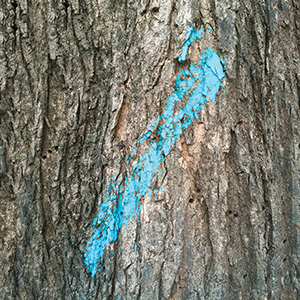 Captiva makes for a consistent, organic work that nicely captures its seaside setting, while Deupree's other new release, the Lost & Compiled collection, has a completely different identity.This collection of unreleased sketches and alternate versions of released songs that differ greatly from what was actually released, and sometimes feature warts and imperfections that makes them all the more endearing.
Captiva makes for a consistent, organic work that nicely captures its seaside setting, while Deupree's other new release, the Lost & Compiled collection, has a completely different identity.This collection of unreleased sketches and alternate versions of released songs that differ greatly from what was actually released, and sometimes feature warts and imperfections that makes them all the more endearing.
The gentle static and subtle melodies of "July 032013" might not be too incongruous with his recent work, but the plucked guitar notes and percussive thuds are more boisterous than I am used to hearing from him, and as a whole it takes on a jazz direction."So Sleepy," an early mix of "For A Morning When," is another moment where Deupree is a standing a bit out of his comfort zone.A sputtering mix of what sounds like bass, synth horns, and processed music box goes in a jerky direction, resulting in a composition that is looser and more erratic than what I expect to hear.
"Journal (Rough)" keeps his penchant for soft and light organic sounds, but within its deconstructed organ-like sounds there is an unexpected appearance of human voice, something Deupree rarely works with in such an obvious context.The shimmering, aquatic sounds of "Sea Last (06.05.08)" result in another piece that takes some unexpected twists, with an interrupting heavy thud and jittery melody that come out of left field.
Captiva might make for the more comprehensive, coherent experience, but Lost & Compiled feels like one made for Deupree's hardcore fans.It admittedly hangs together less effectively as a cohesive album, and I think it is one of the times where it could be best appreciated by someone with a wider familiarity with Deupree's discography.The pieces never go as far as his early flirtations with minimalist techno, but the unexpected and odd directions are best appreciated by those who can tell how different the material truly is.
samples:
 
Read More
- Administrator
- Albums and Singles
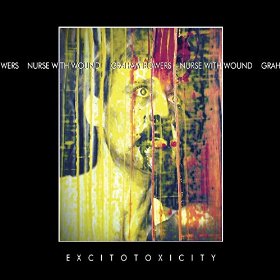 Excitotoxicity is an unwanted process where neurons become over-activated from a surplus of the neurotransmitter glutamate, resulting in cell death and, ultimately, tissue damage and degeneration. Essentially, neurons receive too much stimulation causing the usually well-balanced internal physiology of each cell to become off-kilter and produce excessive levels of harmful molecules that break the neuron down from the inside-out. It is believed to be an underlying part of a number of serious neurological diseases including motor neuron disease, a disease that Graham Bowers has become a victim of. This album is partly a musical diary, an artistic interpretation of neurophysiological processes and a very human response to an unfathomable loss of control.
Excitotoxicity is an unwanted process where neurons become over-activated from a surplus of the neurotransmitter glutamate, resulting in cell death and, ultimately, tissue damage and degeneration. Essentially, neurons receive too much stimulation causing the usually well-balanced internal physiology of each cell to become off-kilter and produce excessive levels of harmful molecules that break the neuron down from the inside-out. It is believed to be an underlying part of a number of serious neurological diseases including motor neuron disease, a disease that Graham Bowers has become a victim of. This album is partly a musical diary, an artistic interpretation of neurophysiological processes and a very human response to an unfathomable loss of control.
ExcitoToxicity’s release comes at a time when mentions of motor neuron disease (MND; or amyotrophic lateral sclerosis, ALS) are running like wildfire through social media thanks to the ice bucket challenge. In contrast to the scores of healthy, young people light-heartedly "raising awareness" about a disease that many cannot describe let alone imagine, this release from Bowers and Steven Stapleton is a quiet and lonely call from the other side of the coin. It is impossible to listen to ExcitoToxicity without taking account of all the contextual information that the album carries with it from the dispassionate facts of how excitotoxicity and disease occur in the body to the highly personal journey that Bowers has found himself traveling upon. "Chains and Gates" begins from an ominous silence before building into a beat and guitar heavy crescendo. The rhythms are sabotaged and pushed into the background by sparks of sound and bell-like interruptions, much like the regular firing of the nervous system becomes dysregulated and disrupted by abnormal activity within itself during neurodegeneration. The album continues in this manner, setting up musical scenarios and dashing them upon the rocks of atonality.
Much like the duo’s first collaboration, Rupture, which dealt with the damage done to the brain through stroke, the idea of the brain as a tightly controlled musical engine (due to its inherent rhythmic activity in the form of brain waves) is used here to demonstrate how delicate this system can be. Throughout ExcitoToxicity, noises begin at low volumes and repeat while simultaneously rising to uncomfortable and almost painful levels. This is a fantastic audiological metaphor for the physiological process of excitotoxicity as neurons fire and fire and fire until they physically break down. More specific references to MND/ALS are made through the titles, "Jack Hammer Mutation"referring to genetic factors associated with the disorder and "Broken Symmetry" reflects the progression of the disease, with paralysis usually developing along one side of the body before crossing over to the other.
Taking all this together as a concept album, it is very clever. Add in the fact that the music is a step up from previous NWW/Bower collaborations (which have been brilliant so far) and this makes for a wonderful release. However, just when I become embroiled enough in the album to get lost in its sounds, I remind myself of Bowers himself going through the emotional and physical turmoil of his body closing in on itself as MND/ALS is a neurological disorder that spares the mind; unlike Alzheimer’s or even extreme Parkinson’s, MND/ALS will destroy the motor system but leave the patient fully aware. Therefore, to think of ExcitoToxicity as purely an art project about a disorder does it a huge disservice, it is also the sound of a man coming to terms with his own mortality and how the rest of his days will be spent. Knowing this makes every second of ExcitoToxicity precious and heavy, heavier than any other recorded work I can think of.
samples:
 
Read More
- Administrator
- Albums and Singles

When Sunn O))) first approached Scott Walker about appearing on their 2009 album Monoliths & Dimensions, little did they know what it would actually lead to. Four years on, Scott was back with something even more enticing, collaborating on Soused, a body of work he was writing with them in mind.
Recorded in London in early 2014 and produced by Scott Walker and long-time ally Peter Walsh with the assistance of musical director Mark Warman, Soused is a 5-track 18-minute body of work that cements both acts’ wide-reaching and otherworldly renown.
Out October 20th on 4AD.
More information and a brief trailer can be found here.
Read More
- Administrator
- Albums and Singles
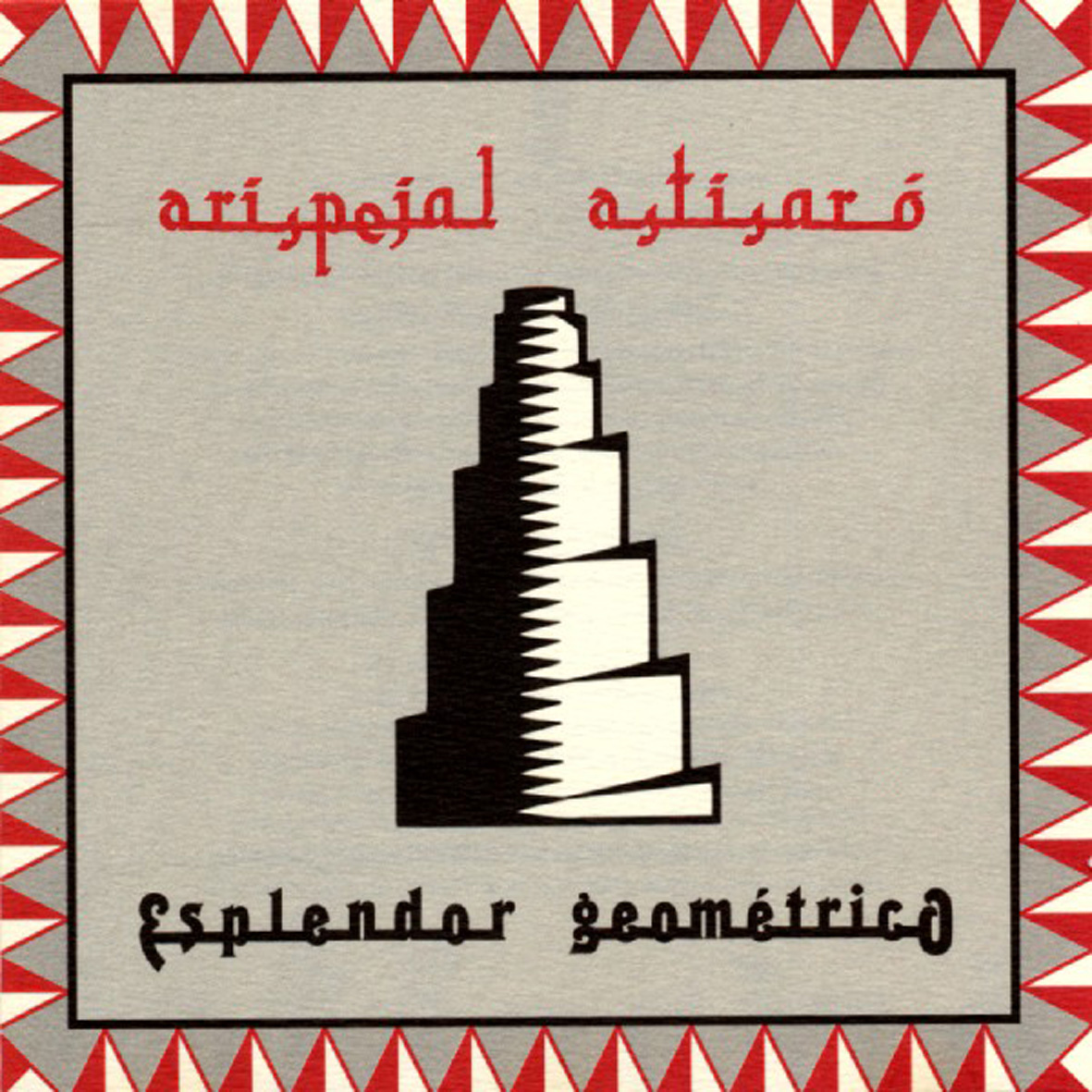
Recently remastered and reissued on their own Geometrik label with radically different cover art and some bonus tracks, this classic 1992 album captures EG in their noisy, rhythmic industrial prime. Like 1991's Sheikh Aljama before it, Arispejal Astisaró flirts with a superficial Middle Eastern influence, but the real draw is its dense and relentlessly punishing machine rhythms. As with many EG efforts, it is sort of a primitive, hit-or-miss affair that largely lives or dies on the strength of its beats, but its highpoints are among the most visceral, bracing, and distinctive works of industrial dance music's brief golden age (and its occasional divergences are even better).
If his albums are any indication, Arturo Lanz does not strike me as a man who is terribly troubled by things like indecision, ambiguity, or nuance.In fact, he often seems more like a machine than a man: a machine that has only an on/off switch (and, at this somewhat early stage of his career, a machine whose settings are all permanently cranked to "10").While that might sound like mere hyperbole, he truly does sound almost inhumanly obsessive and monomaniacal on Arispejal Astisaró.His approach to this album can best be summarized thusly: 1.) devise a compelling rhythm, 2.) execute it with as much brute force as possible, 3.) loop it, and 4.) repeat again and again until there are enough songs for an album.Fortunately, Lanz can be something of a genius within those extremely narrow aesthetic confines, finding many unexpected variations and delivering them all with an appropriate degree of pummeling ferocity.
As stated earlier, the best pieces are almost invariably the ones with the strongest or most inventive rhythms, as Lanz was certainly not concerned with trivialities like hooks, structure, or dynamic variation at this stage in his career.Those rhythms, however, can take some unexpected forms on Arispejal, most notably with the strong opener "Jari," which sounds like an overloaded contact mic recording of a lawn sprinkler taken during an earthquake.Or a recording from inside a downed helicopter during a Blackhawk Down-style urban firefight.I think I will go with the latter.In any case, the most prominent sound is by far the unrelenting sound of the chopper blades (or whatever), but a number of random and mysterious crashes and snatches of garbled voices peak through the stuttering roar to give a menacing and cryptic sense of place.Though Lanz and his collaborator Gabriel Riaza return to similar noisy abstraction again with locked-groove machine noise insanity of the title piece, the rest of the album veers towards significantly more danceable territory.
That certainly does not mean that it would be easy to dance to though.For example, one of the most propulsive pieces ,"Malos Tratos," is frequently disrupted by blood-curdling shrieks, whereas yet another piece ("Felación") awkwardly/comically features some cut-up sex moans.Others are simply just too machine-like, such as the punishing and ferocious clatter of "Bi Bajin," which is also notable for having the most prominent Middle Eastern influence on the album (which is just a chopped and garbled snatch of dialogue).Another dancefloor-killing trait that several sounds possess is a bizarre randomness: while the underlying beat always remains an unstoppable, unchanging force, some of the peripheral noise and percussion stabs seem purely arbitrary and out of time.I am not sure why that could be, as it otherwise seems like EG is a deeply perfectionist project.Perhaps that perfectionism only extends to beat itself, while the roiling entropy above is left somewhat to chance.
Some of the other pieces are more inventive than over-the-top, however, and their presence is what makes Arispejal such a fascinating effort.In particular, I liked "Rab√∫a Aromia," which sounds like a muffled contact mic recording of a telegraph wire during a wind storm.Another stand-out is "Es Inaudito," which combines an oddly timed clanking metallic rhythm with a surprisingly fluid bass line and snatches of breathy female speech.Notably, neither piece is embellished with EG's characteristic maelstrom of blown-out chaos, which makes them surprisingly listenable (and indicative of the direction to come in the future).Then, on the other side of the spectrum, there is the tense and manic bludgeoning of "Ampuchao," which nicely evokes the feeling of frantically running away from a pack of drill-wielding maniacs.
Arispejal is rounded out by a couple of very likable pieces that sound like somewhat muted variations on the standard EG formula."Cataré," for example, takes a slowed-down Latin rhythm and leaves it fairly unmolested except for a distant electronic hum and some occasional thuds and squelches.The closing "Nu Decotora," on the other hand, just unleashes a seemingly basic (but unrelenting) rhythm beneath some moaning, sludgy noise and periodic eruptions from what sounds like downed, sparking power lines.More than any other piece on the album, "Decotora" achieves a hypnotic pulse that remains compelling for its entire duration.As a result, it is deceptively the album's finest piece, as Arispejal's greatest fault tends to be allowing promising ideas to unfold for too long with too little variation: Lanz always does a fine jab grabbing my attention, but does not always manage to hold it.While the obvious, immediate appeal of this record primarily lies in its punishing machine crunch and feral oil-drum rhythms, the pieces that offer the most lasting rewards are mostly the ones where Lanz and Riaza allow their omnipresent veil of crushing density to lift a bit.Consequently, I tend to prefer EG's somewhat more nuanced later work to their work from this "blunt force" period, though I still feel that this is a strong, memorable, and landmark album within EG's discography.
(Note: the 2014 reissue appends four songs from the 1987 Bruitiste compilation on RRRecords, which date from roughly the same time as these recordings: despite being released in 1992, Arispejal was recorded between 1987 and 1989.)
Samples:
Read More
- Administrator
- Albums and Singles
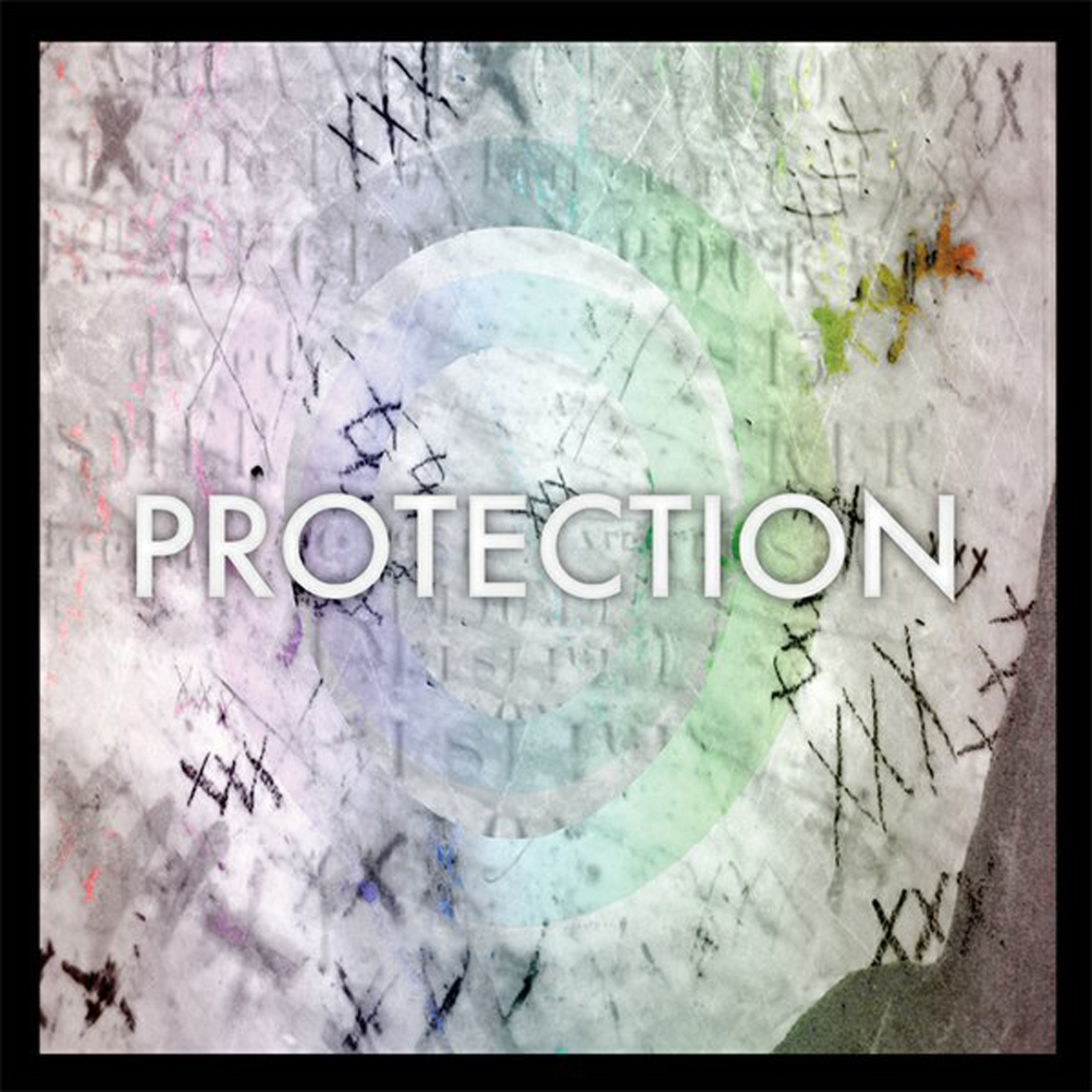 Protection is a long-gestating synth duo consisting of New Orleans' Sam Houston and NYC's Daniel McKernan, the latter of whom has collaborated with both Coil and Cyclobe in the past. Given that pedigree, it is not surprising that this debut EP boasts a distinct Coil influence, but that nocturnal, hallucinatory thread is wonderfully bolstered by both a knack for strong hooks and a guest appearance by the always charismatic Little Annie.
Protection is a long-gestating synth duo consisting of New Orleans' Sam Houston and NYC's Daniel McKernan, the latter of whom has collaborated with both Coil and Cyclobe in the past. Given that pedigree, it is not surprising that this debut EP boasts a distinct Coil influence, but that nocturnal, hallucinatory thread is wonderfully bolstered by both a knack for strong hooks and a guest appearance by the always charismatic Little Annie.
"Prayer" opens this 6-song effort in an ambiguous, mysterious, and deceptively atmospheric way, combining a slow, locked-groove-like pulse with somnambulant, chanted vocals from McKernan that sound like an invocation.It is not a weak piece by any means, but it is certainly an unusual way to start off the record, evoking a phantasmagoric, gently warped, Coil-esque otherness without quite highlighting many of Protection's strengths.As an introduction, however, it works nicely: Houston and McKernan are merely setting the stage for what is to come and what is to come is almost uniformly great.The first evidence of that is the brooding, minimalist synthpop of "Popcycle," which features a strong, obsessive-sounding vocal hook from McKernan over a simple, yet gradually intensifying, bed of darkly burbling synth and a propulsively clattering and thumping percussion loop.As fine as that piece is, it is very nearly eclipsed immediately by the following Little Annie showcase, "Jack/Rabbit," which treads similar, yet slightly more menacing, musical territory beneath Annie's cryptic, disjointed, and layered spoken-word monologue.While it is not quite as hooky and tautly crafted as its predecessor, it more than makes up for it by favorably recalling the bite of prime Annie Anxiety.
Remarkably, the second side opens with a piece even better than anything on the already wonderful first side, as the McKernan-sung "I Worry If You're Warm" sounds like the best song Cold Cave never wrote..or maybe even Depeche Mode.In any case, Protection manage to deliver an absolutely perfect, haunted-sounding synthpop gem that is every bit as hooky and flawlessly crafted as Depeche Mode's best work, but with more gravity, intelligence, and complexity (the latter of which only becomes fully clear when the layers gradually fall away to leave only Christiana Key’s tense violin).The more languorous and shuffling Houston-sung "Before I Was a Man" dips the momentum a bit, but remains likable.  Though "Man" is the only piece where Sam handles lead vocals all the way through, his melodic and soulful vocals are an inspired foil for McKernan's own deadpan delivery throughout the album, popping up again and again for choruses and harmonies. Speaking of vocals, Little Annie appears yet again for the EP's conclusion: a surging reprise of "Jack/Rabbit" remixed by producer Bruno Coviello, Jr. (formerly of Light Asylum).While I probably would have preferred another new piece, it is hard to complain about getting to hear one of the record's highlights return in a heavier, more tensely jittery form.
If this EP can be said to have a flaw, it is simply that I wish there were more songs, as two of the six pieces are either remixes or introductions.That would not normally be exasperating, but Sam and Daniel started recording this effort all the way back in 2011, so it could be quite some time before the duo surfaces again (that translates into roughly one completed song per year).Still, that time was definitely well-spent and I am glad Protection did not pad their debut with any weaker material, as practically everything here sounds like it was painstakingly crafted to absolute perfection–you only get one chance to burst onto the scene, I guess.In any case, I have been playing the hell out of this EP and emphatically believe that "I Worry If You're Warm" is one of the best songs that anybody will release this year.Houston and McKernan have found themselves a truly wonderful niche, as it is truly rare to find synthpop this tough and subtly hallucinatory and even rarer to find experimental music this tightly structured and hooky.
Samples:
Read More
- Administrator
- Albums and Singles
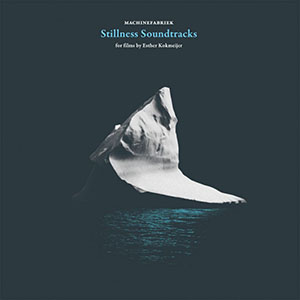 This material is a series of soundtracks that Rutger Zuydervelt composed to complement Esther Kokmeijer's short films of Antarctica and Greenland, thus fitting in well with this Italian label's frigid, isolationist aesthetic.  Rather than overemphasizing minimalism and emptiness, Zuydervelt instead works in subtle and understated conventional electronic moments in, giving the album a unique feel rather than by-the-book sparseness that could have been.
This material is a series of soundtracks that Rutger Zuydervelt composed to complement Esther Kokmeijer's short films of Antarctica and Greenland, thus fitting in well with this Italian label's frigid, isolationist aesthetic.  Rather than overemphasizing minimalism and emptiness, Zuydervelt instead works in subtle and understated conventional electronic moments in, giving the album a unique feel rather than by-the-book sparseness that could have been.
The two "(Chinstrap)" pieces are the ones that most closely resemble traditional soundtrack compositions.  The first version balances marimba like melodies over simple electronics, and soon the piece is fleshed out via the addition of droning, expanding string sounds.  The second features piano and nature sounds in addition to the strings and also has a very standard "opening credits" feel.
The five remaining pieces, however, are not as easily classified.  An ominous hum features heavily in "Stillness #1", which would fit in easily on one of the isolationist compilations of the mid 1990s.  When a simple, but forceful, pulsing kick drum comes in, however, the piece sets itself apart from other similar ones.  "Stillness #2" also has Zuydervelt mixing in a fuzzy drum-like track with a vinyl crackle to give a sense of rhythm, balancing out the especially hushed second half.
"Stillness #4" turns the volume up somewhat, having a more traditional electronic sound amid deep bass pulses and echoing reverberations.  The more conventional approach is paired with a dissonant, fuzzy texture and crackling layers to balance out the normalcy, resulting in a strong stylistic pairing.  "Stillness #5" also is a bit more tied to convention in its overall instrumentation.  Gliding bass tones give it a rich, heavy low end, but synth strings make for another more traditional soundtrack approach as a whole.
I was expecting more of a standard ultra-minimalist isolationist sound to Stillness Soundtracks, and I was pleasantly surprised how Zuydervelt mixed in some more conventional elements and rhythms that keep it from being too stagnant or predictable.  The overarching glacial feel is clearly present in these recordings, but through the variation injected into them, it is anything but off-putting.
samples:
 
Read More
- Administrator
- Albums and Singles
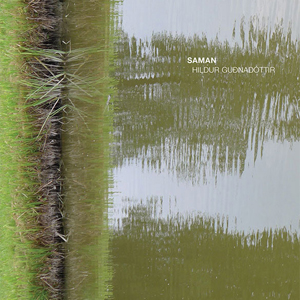 The Touch label's extensive roster only has a few artists who would be considered classical in the traditional sense, and Hildur Gudnadottir is one of those.  With instrumentation consisting only of her cello and her voice on some of these pieces, and guest musician Skuli Sverrisson on bass for one of them, Saman is a stripped down affair that excels at what it intends to do, but does not step out of that comfort zone either.
The Touch label's extensive roster only has a few artists who would be considered classical in the traditional sense, and Hildur Gudnadottir is one of those.  With instrumentation consisting only of her cello and her voice on some of these pieces, and guest musician Skuli Sverrisson on bass for one of them, Saman is a stripped down affair that excels at what it intends to do, but does not step out of that comfort zone either.
The best pieces on this album are the ones in which Hildur pairs her voice with the cello, rather than just focusing on the instrument only.  "Heyr Himnasmiður," for example, sparingly uses both the strings and her voice, but the dramatic shifts in dynamic from near silence to pure, rich tone is brilliant.  This excellent use of silence to magnify the sound appears again on "Líður," immediately leading off with multi-tracked vocals and cello, but returning into silence throughout the composition.
"Heima," featuring Skuli on bass, benefits from the inclusion of the additional instrumentation, with plucked strings and additional reverb (the cello playing being resonated through two grand pianos) adding a bit more complexity.  The piece is soft, but a bit too busy to be peaceful, which keeps it interesting and helps it to stand out.  The final composition, "Þoka," is the odd one out, with a heavier sound and buzzy, less clean sounding strings, but is all the more memorable for that difference.
Shifting dynamics work extremely well on "Strokur" too, with forceful and deliberate swells of cello that go from loud to quiet and back, with high and low register notes that encompass the full sonic spectrum.Hildur maintains a slow pace on "Birting," filling out the mix with some subtle layering and looping, for the most part the only overt processing used on this album.On "Í hring," however, she pairs the low register drone that a cello can do so well with lighter, more melodic sounds a bit further in the mix.  The dynamic does not shift drastically, but remains light and spacious throughout.
Saman is an album rich with Hildur Gudnadottir's subtle cello and hushed voice, that delicately lingers for the 40 minute duration.  It accomplishes this very well, but I wish there would have been a few more experimental or challenging moments that would stand out.  The pieces where her voice is prominent, or a less traditional approach is used in the performance are the ones that are the most memorable.  The other moments are pleasant, but are not quite as effectively captivating.
samples:
 
Read More
- Administrator
- Albums and Singles
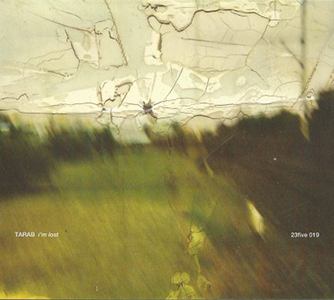 The title of this Australian artist’s latest album is extremely fitting.  Passages of roughly edited tape, collages of indecipherable found sounds, and bizarre production is disorienting at best, and downright baffling much of the time.  It is because of this confusing, jarring, and sometimes frightening nature that the disc works so well.
The title of this Australian artist’s latest album is extremely fitting.  Passages of roughly edited tape, collages of indecipherable found sounds, and bizarre production is disorienting at best, and downright baffling much of the time.  It is because of this confusing, jarring, and sometimes frightening nature that the disc works so well.
This is my first experience with Eamon Sprod’s work, so I was not fully sure what to expect past the initial sound clip that I heard.  Of course, the intentionally vague (yet beautiful) artwork does nothing to elucidate things much, something I doubt was an accident.  The first of the five untitled compositions is an appropriately forceful introduction, and is gripping to say the least.Very lo-fi field recordings are paired with white noise bursts and subsonic bass that pummels through a jerky stop/start jump cut editing, and this is just the first 30 seconds.  Mechanical clattering, birds chirping, a passing train and what could be a tape recorder left in an oil drum as it rolls down a steep hill appear in the following five minutes.
The middle pieces are a bit less chaotic, but only marginally so.  The second is largely built upon hollow hums and ghostly scrapes, occasionally interrupted by a razor sharp outburst or crackling texture that builds to an aggressive jet engine roar before pulling back to a dull hum.Sprod mixes subsonic bass and jump cut noise for a chaotic opening of the third piece before scaling back to an ominous rattle that stays more consistent through the remainder of the composition.
The final two pieces are more akin to opening in terms of frenetic noise and pure dissonance.Eamon uses static bursts and digital edits effectively on the fourth piece, mixing up the shimmering harsh noise and crackling textures.  Paired with the unidentifiable junk found sounds, Sprod shifts between pensive ambience and abrasive chaos at a ridiculous pace.  The final piece might begin at a low volume crinkling, but what could be a microphone scraped on a gravel driveway prevents it from being anything but ambient.  Distant talking and cricket chirps might sound peaceful, but violent clattering noise is anything but.
The absurdist, junky noise collages of I’m Lost reminded me of Sudden Infant or Runzelstirn & Gurgelstock’s work, but without the organic, occasionally nauseating component both Joke Lanz and Rudolf Eb.er are fond of exploiting.  The harshness, aggression and unpredictable production is consistent with that scene though. Violent, sometimes unpleasant, and infrequently introspective, I’m Lost is a schizophrenic, but brilliant mass of sound.
samples:
Read More